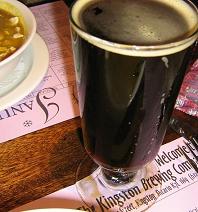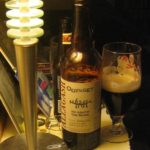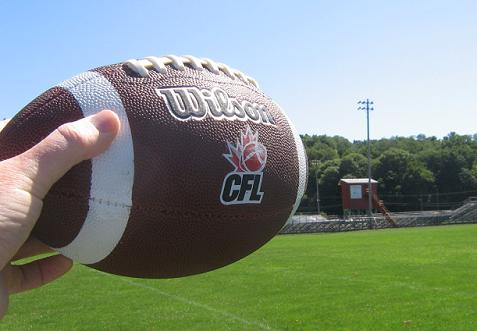 You would never confuse me for a jogger. I am big. I like that. I was over six foot at twelve. A small giant. I can pick up things others can’t. Move large objects. I am often asked by little old ladies to reach the high shelf for them at the grocery store. But you have to watch it. Over two decades ago I took the advice of a doctor to watch my blood tests right after he told me I had the results of an 80 year old. In my family of Scots coffin nail puffers, whisky tipplers, fish ‘n’ chip eaters and sofa lobby dossers, well, the genes aren’t that good and my 1980s fry pan diet was not helping. Twenty odd years later filled with daily salmon oil pills, soy and other bits and pieces of the good stuff has resulted in having the cholesterol and blood sugar levels of a daily runner. But I am still big. Good for leaning into the bumper of a car needing to be unstuck in the snow. Not so good for the second 45 years I consider my allotment in life.
You would never confuse me for a jogger. I am big. I like that. I was over six foot at twelve. A small giant. I can pick up things others can’t. Move large objects. I am often asked by little old ladies to reach the high shelf for them at the grocery store. But you have to watch it. Over two decades ago I took the advice of a doctor to watch my blood tests right after he told me I had the results of an 80 year old. In my family of Scots coffin nail puffers, whisky tipplers, fish ‘n’ chip eaters and sofa lobby dossers, well, the genes aren’t that good and my 1980s fry pan diet was not helping. Twenty odd years later filled with daily salmon oil pills, soy and other bits and pieces of the good stuff has resulted in having the cholesterol and blood sugar levels of a daily runner. But I am still big. Good for leaning into the bumper of a car needing to be unstuck in the snow. Not so good for the second 45 years I consider my allotment in life.
 So, what to do about that? What to do about the beer? Got me thinking. You know how you play the game of justifying beer. I knew a guy in undergrad who, as part of his “fit yet party” plan, made sure he had over 50% of his caloric intake dedicated to the beer. He didn’t look real good. He invented new shades of grey with his body. Checking around the internet I found a few sources of information on calories and beer but not the real nugget I was searching for. I wondered what was the number of calories in a huge Belgian beer like a 750 ml Trappist quad. Hard to find out. Too much information is couched in the round about approach, in the comforting justification like those found in this article by Michael Jackson from 1994:
So, what to do about that? What to do about the beer? Got me thinking. You know how you play the game of justifying beer. I knew a guy in undergrad who, as part of his “fit yet party” plan, made sure he had over 50% of his caloric intake dedicated to the beer. He didn’t look real good. He invented new shades of grey with his body. Checking around the internet I found a few sources of information on calories and beer but not the real nugget I was searching for. I wondered what was the number of calories in a huge Belgian beer like a 750 ml Trappist quad. Hard to find out. Too much information is couched in the round about approach, in the comforting justification like those found in this article by Michael Jackson from 1994:
On the question of quality, I realised I was worrying unnecessarily: speciality beers would exclude anything as watery tasting as Miller Lite (96 calories per 12oz or 35cl, standard American bottle) or as bland as a regular Budweiser (150 calories). We could have a similar serving of a European-style lager or a pale ale for about 180 calories or less.And, curiously, a beer full of flavour and colour such as Guinness stout weighs in with only 140 calories per 35cl serving. The same amount of wine could rack up more than 240 calories, although we usually serve grape in smaller glasses. But whichever the accompaniment to a meal, the drink contributes far fewer calories than the food.
I mean, there is nothing wrong with that information but who really has the 200 ml glassware which that Jack Michaelson fellow set out with the meal he described? OK, let’s just say I wouldn’t. And what of that big Belgian bomb? Here are a couple of handy lists setting out the of beer to calorie ratio for a huge number of brands. They work on the 100 ml principle. Unfortunately I don’t and neither do you. So let’s think in terms of a 2000 ml scale which is roughly the equivalent of a North American six pack or four UK pints. What does the available data tell us?
- Guinness (4.1%) – 2000 ml equals a little under 840 calories.
- Blue Moon (5.4%) – 2000 ml is around 1026 calories.
- Anchor Porter (5.7%) – 2000ml equals 1180 calories.
- Dragon Stout (6.8%) – 2000 ml equals 1240 calories.
You can see where I am going with this. I feel like I am breaking some sort of guy rule. Some sort of unwritten law of the beer men. But we have to walk in this world in awareness. So you will not cringe when I note that one McDonalds Angus burger and medium fries is 950 calories or that the same number of calories in raw chopped red cabbage is found takes over 30 cups…which is like 3 bushels, right? You can handle this information. Because you are strong. Because you really prefer a six of Anchor Porter to 46 cups of raw chopped red cabbage.
But how do you know what is in what you put in you? Bob Skilnik, author of Beer and Food, is on the job with his Drink Healthy Drink Smart project that goes along with his book Does My BUTT Look BIG In This BEER. I think it is a great idea, especially for those of us who are closer to (yes, I will say this) retirement than high school. I have not downloaded a copy of DMBLBITB but at only seven bucks you and I probably should. With any luck he’ll tell you what’s in that corked bomber of craft brew quad. Once you know, you may want to plan around it. You may want a few cups of cabbage after all.

 You would never confuse me for a jogger. I am big. I like that. I was over six foot at twelve. A small giant. I can pick up things others can’t. Move large objects. I am often asked by little old ladies to reach the high shelf for them at the grocery store. But you have to watch it. Over two decades ago I took the advice of a doctor to watch my blood tests right after he told me I had the results of an 80 year old. In my family of Scots coffin nail puffers, whisky tipplers, fish ‘n’ chip eaters and sofa lobby dossers, well, the genes aren’t that good and my 1980s fry pan diet was not helping. Twenty odd years later filled with daily salmon oil pills, soy and other bits and pieces of the good stuff has resulted in having the cholesterol and blood sugar levels of a daily runner. But I am still big. Good for leaning into the bumper of a car needing to be unstuck in the snow. Not so good for the second 45 years I consider my allotment in life.
You would never confuse me for a jogger. I am big. I like that. I was over six foot at twelve. A small giant. I can pick up things others can’t. Move large objects. I am often asked by little old ladies to reach the high shelf for them at the grocery store. But you have to watch it. Over two decades ago I took the advice of a doctor to watch my blood tests right after he told me I had the results of an 80 year old. In my family of Scots coffin nail puffers, whisky tipplers, fish ‘n’ chip eaters and sofa lobby dossers, well, the genes aren’t that good and my 1980s fry pan diet was not helping. Twenty odd years later filled with daily salmon oil pills, soy and other bits and pieces of the good stuff has resulted in having the cholesterol and blood sugar levels of a daily runner. But I am still big. Good for leaning into the bumper of a car needing to be unstuck in the snow. Not so good for the second 45 years I consider my allotment in life. So, what to do about that? What to do about the beer? Got me thinking. You know how you play the game of justifying beer. I knew a guy in undergrad who, as part of his “fit yet party” plan, made sure he had over 50% of his caloric intake dedicated to the beer. He didn’t look real good. He invented new shades of grey with his body. Checking around the internet I found a few sources of information on calories and beer but not the real nugget I was searching for. I wondered what was the number of calories in a huge Belgian beer like a 750 ml Trappist quad. Hard to find out. Too much information is couched in the round about approach, in the comforting justification like those found in
So, what to do about that? What to do about the beer? Got me thinking. You know how you play the game of justifying beer. I knew a guy in undergrad who, as part of his “fit yet party” plan, made sure he had over 50% of his caloric intake dedicated to the beer. He didn’t look real good. He invented new shades of grey with his body. Checking around the internet I found a few sources of information on calories and beer but not the real nugget I was searching for. I wondered what was the number of calories in a huge Belgian beer like a 750 ml Trappist quad. Hard to find out. Too much information is couched in the round about approach, in the comforting justification like those found in 
 Not really that hard to believe given I filled the gap with at least 20 years of semi-regular soccer but it is a different skill than that round ball with all its room for forgiveness. But I am way too big. I need to do a Ben. So I bought a bench. I need to find my inner ox within my outer Dom Deluise. It’s a good bench. At only 89 bucks USD at a Dick’s it’s what I can use rather than snap.
Not really that hard to believe given I filled the gap with at least 20 years of semi-regular soccer but it is a different skill than that round ball with all its room for forgiveness. But I am way too big. I need to do a Ben. So I bought a bench. I need to find my inner ox within my outer Dom Deluise. It’s a good bench. At only 89 bucks USD at a Dick’s it’s what I can use rather than snap.